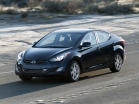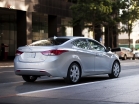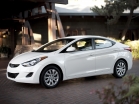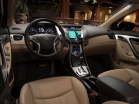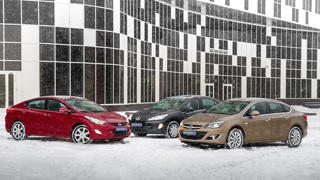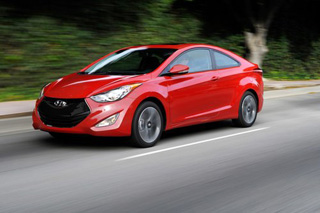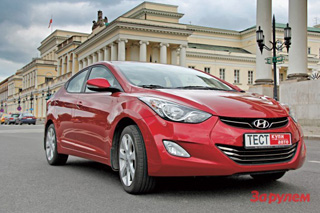Hyundai Elantra sedan test drive since 2010 sedan
Hyundai Elantra (2000-2007, 2008-N.V.): reasonable and enough
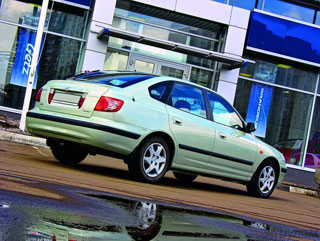 Those who choose a used car not with their hearts, but with their minds, Igor Kozlov advises to look at the Hyundai Entrance.
Those who choose a used car not with their hearts, but with their minds, Igor Kozlov advises to look at the Hyundai Entrance. Prices for six -year -old cars rise from 250 thousand (1.6 liters, mechanics) or from 270 thousand rubles. (1.6 l, automatic transmission). Three -year -olds are most expensive by 40 and 55 thousand rubles. respectively. This indicates a high liquidity of the model. By the way, these modifications are the most popular in the market. It is not by chance that they were mastered by Tagaz in 2008 after the model was discontinued in Korea. The place of birth is also easy to determine by the first signs VIN: X7M means that the machine is assembled in Russia, KMH in Korea. Elantra, like any car, has weaknesses. Knowing them, it is easier to find a decent copy on the market and predict the costs of its further maintenance.
Behind simple forms
The design of Elantra is not exquisite, but recognizable. This is perhaps one of the first Korean cars, which, not being a wash, received a completely European appearance. Maybe that's why EURONCAP experts did not pull with Crash test and conducted it immediately after the appearance of the model. The main claims were caused by poor protection of the knees, significant floor deformation and too strong pressure on the chest of the mannequin from the straps of seat belts. In addition, the head of the artificial driver missed the pillow, and the door after the collision opened arbitrarily. The resulting three stars, by modern standards, is, of course, not enough, but we will make a discount on the age of development and the time of meeting with a cube (see the history of the model).
If there were no accidents, then you are unlikely to find a rust on the body. The exception of the rear wheeled niches, in which the coating is quite quickly peeled off, exposing the metal. It turned out that some cars were sold without rear shelters designed to protect the cavities from the effects of stones and sand. If you turn up just this, immediately process the arches, for example, with bitumen mastic.
Do not spare pebbles and chrome on the grille of the radiator. If the coating is pierced through, then the blisters and subsequent exfoliation do not wait long. Want to put the face in order buy a regular plastic part; Let it not sparkle so, but practical.
Check the performance of the wiper. If the drive creaks with the leashes, and crushes with lowered ones, these are the right signs of acidification of steel axes due to silumin bushings. Do not be too lazy to disassemble and lubricate the knot, otherwise you will look for a new electric motor in it due to increased resistance to rotation will soon burn out the anchor windings.
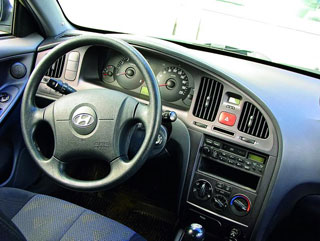 It can upset the barely frozen air conditioning, requiring the replenishment of the refrigerant, while experts, as a rule, do not find the fistula in the system. Typically, refueling is enough for two to three years. Obviously, the gas disappears through the microbrash in the seals. The air conditioner radiator is kept very worthy, especially against the background of other Korean cars.
It can upset the barely frozen air conditioning, requiring the replenishment of the refrigerant, while experts, as a rule, do not find the fistula in the system. Typically, refueling is enough for two to three years. Obviously, the gas disappears through the microbrash in the seals. The air conditioner radiator is kept very worthy, especially against the background of other Korean cars. But you can’t say that about the radiator of engine cooling: often cracks appear in plastic tanks. Many dealers write off this on the influence of chemistrates with which the streets are watered in winter. Is this a real reason, it is not known for certain, but if you monitor the fluid level daily, you can notice the leak in time. No blame on your own laziness and prepare for the repair of a boiled engine.
Alpha and Beta
Cars were officially supplied to our market only with G4ed engines with a volume of 1.6 liters, a 1.8-liter G4GB and a 2-liter G4GC. The first refers to the Alpha II series, and the other two to beta. All descendants of Mitsubishi and without significant changes have been produced for many years. They have long been well studied by masters, so there are no problems with repairing even in the outback.
Alpha are demanding on fuel quality. It is worth refueling on the left, how the check Engine lights up, notifying the troubles of lambda. The fact is that the engine of the engine control unit is designed for good gasoline, but ours, as you know, can be different. It is not always possible to burn a surrogate with acceptable emissions of electronics, so it asks for help. At first, the cars were saved by dealers, flashing blocks, and from about mid -2003 the plant began to put other control units familiarized with Russian features. Beta is much less picky for gas.
Fortunately, the motors are tolerant of the increased content of fuel resins, so there are almost no valves due to tarry deposits. But unverified oils are better to avoid sticky black formations under the valve lid can kill hydraulic compensators on alpha. It is much cheaper to change the oil in a timely manner. On the beta, we adjust the gaps, as in our eights. According to the regulations, after 90 thousand km, but even with a run of 120 thousand. Only a third of the valves really need this.
The timing drive for engines is essentially the same: the belt turns only the exhaust shaft, and the inlet is transmitted by the chain connecting the shafts on the other end of the head. The belt needs to be changed every 60 thousand km, but the chain is lucky. On the beta, she withstands about 180 thousand, and alpha can make noise at 60 thousand km. When changing the chain, keep in mind: on beta, marks on stars should look strictly upward, on alpha in opposite directions. In both cases, the chain should lie on the teeth so that the links with golden color are opposite the marks.
The release system is relatively durable, but it has an unpleasant feature: the second oxygen sensor is located behind the bellows designed to compensate for the movements of the power unit. If you perfume it (for example, in the rut), then the engine control unit will not be able to find out the true composition of the exhaust and will go into the emergency mode, knowing the Check Engine signal about this. The motor, of course, will not stop working, but we still do not advise going under the roar of exhaust and dying moans of the neutralizer. Moral: Set the power protection of the motor compartment!
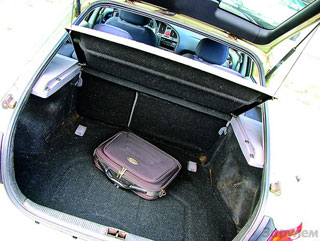 Checked in a taxi
Checked in a taxi The adhesion resource is an average of 120 thousand km, which is quite tolerant. There are no complaints about the mechanical gearbox, but the machine sometimes sins with a leakage of oil through the seals of the drive shafts. If this is not noticed on time, then the final of oil starvation can be an expensive repair of the unit.
The shock absorbers often repel, and neither knocks nor any significant change in the behavior of the car can be noticed for a long time. So, the signs of leaks sometimes appear at a run of 8090 thousand, and knocks and boltck after 2040 thousand km. The shock absorbers are changed, of course, only a couple.
After 100 thousand km, the steering rack can be posed. The dealers change it assembled, but it will be possible to pretty much to save, if you give the knot in bulkhead. In large cities there is more than one company ready to change the penny sleeve on the right side of the mechanism.
To 50 thousand km, bushings of the rear stabilizer are divided. It is easy to change, and the details are inexpensive. The racks, as a rule, last longer up to 120 thousand km. Silent-blocks are unlikely to worry up to 200 thousand km, but that is the trouble: when the time comes, it is impossible to unscrew the bolts acidified in spacer bushings. Therefore, while the fasteners are fresh, disassemble and lubricate the compounds, for example, Movil. The same misfortune can lift in wait and in the front suspension its elements are no less durable.
Front brake pads serve 3045 thousand km (automatic transmission/manual transmission), and discs twice as long. In cars with a machine gun, dealers sometimes change the pads on each (interval of 15 thousand km) due to more than half worn overlays. It is clear that they will not reach the next service, but if you change the pads with an interval of 2025 thousand km, then it may be possible to save a little.
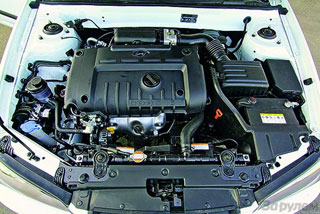 The rear pads are enough for 7080 thousand, and the discs for 140160 thousand km. In the drum mechanisms (such options are also found), the pads live up to 100 thousand km, but this is not a reason not to disassemble, not to clean or lubricate the mechanism for prevention. However, the sour handbrake will not let you forget about it.
The rear pads are enough for 7080 thousand, and the discs for 140160 thousand km. In the drum mechanisms (such options are also found), the pads live up to 100 thousand km, but this is not a reason not to disassemble, not to clean or lubricate the mechanism for prevention. However, the sour handbrake will not let you forget about it. The history of the model
2000 Turin. The debut of a second-generation Hyundai Elantra (in some markets the model is called the Lantra or Avant). Body: sedan and 5-door hatchback. Engines (all P4): gasoline 1.6 liters, 77 kW/105 hp. or 79 kW/107 hp (differences in the settings); 1.8 l, 97 kW/132 hp.; 2.0 l, 102 kW/139 hp or 105 kW/143 hp (differences in the settings); Direct injection turbodiesel by a Uzmon Rail 2.0 liters, 82.5 kW/112 hp. Front drive, M5 or A4.
2001 EURONCAP Crash Test: 6 points per frontal blow and 14 for the side. Total: 20 points and three stars.
2003 restyling. The modest volume of changes did not prevent Enlantre from obtaining the status of a third -generation model.
2007 is a fourth -generation model.
2008 Tagaz has mastered the production of the elandra of the 2003 model year.
We thank the shopping and service complex Automir Hyundai in Maryino for help in the preparation of the material.
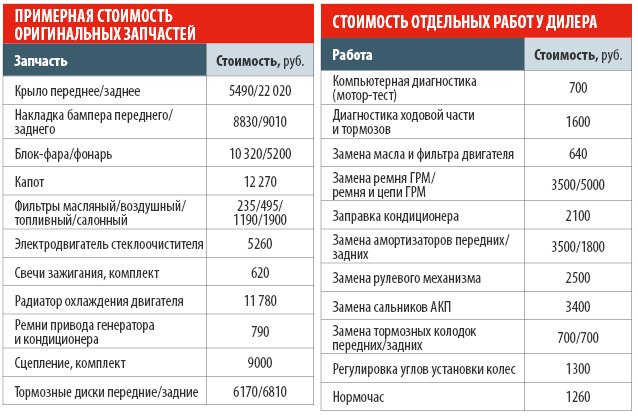
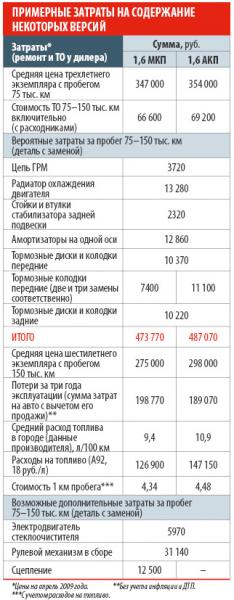
Source: The magazine "Driving"

